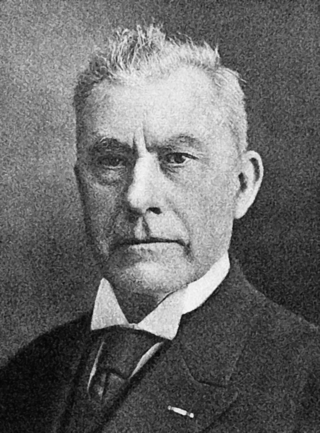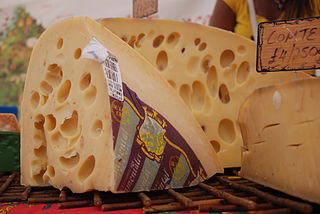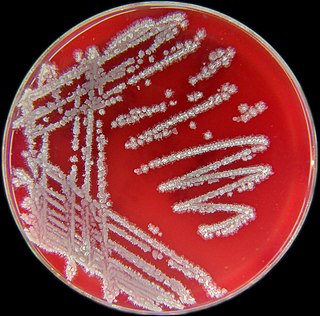
Martinus Willem Beijerinck was a Dutch microbiologist and botanist who was one of the founders of virology and environmental microbiology. He is credited with the co-discovery of viruses (1898), which he called "contagium vivum fluidum".

Propionibacterium is a gram-positive, anaerobic, rod-shaped genus of bacteria named for their unique metabolism: They are able to synthesize propionic acid by using unusual transcarboxylase enzymes.
Members of the genus Selenomonas are referred to trivially as selenomonads. The genus Selenomonas constitutes a group of motile crescent-shaped bacteria and includes species living in the gastrointestinal tracts of animals, in particular the ruminants. A number of smaller forms discovered with the light microscope are now in culture but many, especially the large selenomonads are not, owing to their fastidious and incompletely known growth requirements.

Fritz Richard Schaudinn was a German zoologist.

Bacillus licheniformis is a bacterium commonly found in the soil. It is found on bird feathers, especially chest and back plumage, and most often in ground-dwelling birds and aquatic species.
Paracoccus denitrificans, is a coccoid bacterium known for its nitrate reducing properties, its ability to replicate under conditions of hypergravity and for being a relative of the eukaryotic mitochondrion.
Franz Xaver Rudolf von Höhnel was an Austrian bryologist, mycologist, and algologist, brother of explorer Ludwig von Höhnel (1857–1942). He obtained his PhD in Strasbourg in 1877, and was a professor of botany in the Vienna University of Technology from 1884 to 1920. Höhnel described roughly 250 new genera and 500 species of fungi, and was known for his contributions to the taxonomy of the Coelomycetes. He died in Vienna on November 11, 1920.
Werner Georg Kollath was a German bacteriologist, hygienist and food scientist. He is considered a pioneer of whole foods.

Sporobolomyces is a genus of fungi in the subdivision Pucciniomycotina. Species produce both yeast states and hyphal states. The latter form teliospores from which auricularioid (tubular and laterally septate) basidia emerge, bearing basidiospores. Yeast colonies are salmon-pink to red. Sporobolomyces species occur worldwide and have been isolated (as yeasts) from a wide variety of substrates. They produce ballistoconidia that are bilaterally symmetrical, they have Coenzyme Q10 or Coenzyme Q10(H2) as their major ubiquinone, they lack xylose in whole-cell hydrolysates, and they cannot ferment sugars. One species, Sporobolomyces salmonicolor, is known to cause disease in humans.
Jeewanu are synthetic chemical particles that possess cell-like structure and seem to have some functional properties; that is, they are a model of primitive cells, or protocells. It was first synthesised by Krishna Bahadur, an Indian chemist and his team in 1963. Using photochemical reaction, they produced coacervates, microscopic cell-like spheres from a mixture of simple organic and inorganic compounds. Bahadur named these particles 'Jeewanu' because they exhibit some of the basic properties of a cell, such as the presence of semipermeable membrane, amino acids, phospholipids and carbohydrates. Further, like living cells, they had several catalytic activities. Jeewanu are cited as models of protocells for the origin of life, and as artificial cells.

Otto Kandler was a German botanist and microbiologist. Until his retirement in 1986 he was professor of botany at the Ludwig Maximilian University of Munich.

František Bubák was a Czech mycologist and phytopathologist.
Mycoplana is a genus of Gram-negative bacteria. The cells are slightly curved or irregularly shaped rods. Initially, the cells can form filaments, which can also be branched. After some time, the filaments break up into irregular rods. Mycoplana is motile by peritrichous flagella.
Bifidobacterium asteroides is a gram-positive, rod-shaped species of bacteria. Various strains of this species have been isolated from the hindguts of honey bees. Prior to 1969, this species was referred to as strains of Bacillus constellatus.

Microbiological Research is an academic journal in microbiology, published by Elsevier. It has an impact factor of 6.1 as of 2023. The journal was established in 1896.

Azotobacter chroococcum is a bacterium that has the ability to fix atmospheric nitrogen. It was discovered by Martinus Beijerinck in 1901, and was the first aerobic, free-living nitrogen fixer discovered. A. chroococcum could be useful for nitrogen fixation in crops as a biofertilizer, fungicide, and nutrient indicator, and in bioremediation.
Listeria seeligeri is a Gram-positive, facultatively anaerobic, motile, nonspore-forming, bacillus-shaped species of bacteria. It is not pathogenic. The species was first isolated from plants, soil, and animal feces in Europe, was first proposed in 1983, and is named after Heinz P. R. Seeliger. Seeliger first proposed the species L. ivanovii and L. innocua, and published extensively on members of the genus Listeria.

Dr Joseph Friedrich ("Fritz") Weleminsky, was a physician, a scientist and a privatdozent in Hygiene at the German University, Prague who, in the early 20th century, created an alternative treatment for tuberculosis, tuberculomucin Weleminsky.
Cyathocotylidae is a family of trematodes in the order Diplostomida.
Listeria innocua is a species of Gram-positive, rod-shaped bacteria. It is motile, facultatively anaerobic, and non-spore-forming. L. innocua was named innocua (innocuous) because, in contrast to Listeria monocytogenes, it does not readily cause disease in mammals. Another Listeria species, L. seeligeri, was named after one of the discoverers of L. innocua.









